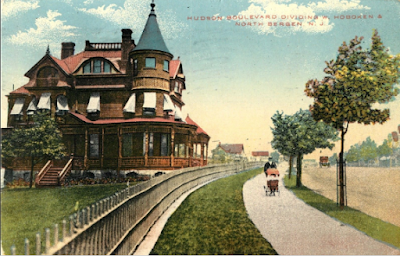"A Scattered Settlement"
The Historical Collections of the State of New Jersey was written by John W. Barber and Henry Howe. It was released by the New York publisher S. Tuttle in 1844. The book gives a very detailed history of the state neatly packaged by county and subsequently by townships within each county. Given that the book was written in the early 1840s only several towns within the county appear by name. Starting on page 225 it discusses the history and state of the defunct town of Bergen. It provides a brief description of Harrison, Jersey City, North Bergen and a village named Van Vorst (current day Harsimus neighborhood in Jersey City). The highlighting of North Bergen is concise, as the town was only found two years prior, 1842. The excerpt provided below features what Barber and Howe noted about the early aspects of the town.
1841 Topographical map of North Bergen
Full interactive map available here.
"North Bergen was formed, in 1842, from that part of Bergen. N. of the New Jersey railroad. It is 6 miles long, and from 2 to 4 wide. it is bounded N. by Hackensack and Lodi, (Bergen co.,) E. by Hudson river and Van Vorst, S. by Bergen, and W. by Passaic river, separating it from Harrison. The Palisades enter the township on the north. Much of its surface is marsh; elsewhere the soil is generally very fertile, and produces large quantities of vegetables for the New York market.
North Bergen is a scattered settlement, on the summit of the ridge north of the New Jersey railroad, 2 miles west of Jersey City, containing about 60 dwellings. Secaucus is an island, or more properly a strip of firm land, surrounded by a marsh, in the NW. part of the township. There is at that place a Baptist church. New Durham, 4 miles north of Hoboken, on the Hackensack turnpike, has 1 Reformed Dutch and 1 Baptist church, and about 50 dwellings."
To read the section on North Bergen and chapter on Hudson County in its entirety, click here.



Comments
Post a Comment